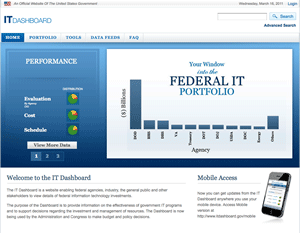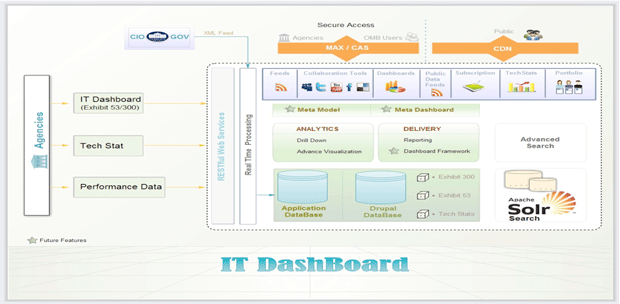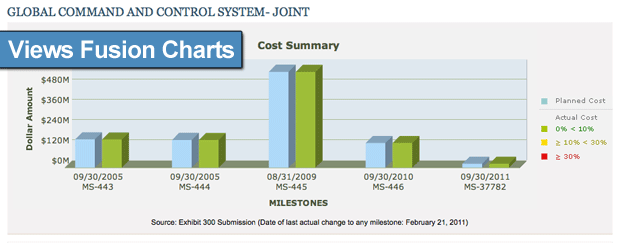Mengintip Pekerjaan Pertama para Milyuner dan CEO 'Besar'
Nurul Qomariyah : detikFinance
detikcom - Jakarta, Mereka kini menjadi CEO di perusahaan-perusahaan besar. Tapi siapa sangka dulunya mereka hanyalah seorang tukang masak ataupun tukang pengantar koran. Kerja keras dan nasib baik telah mengantarkan mereka hingga ke posisi puncak.
Siapa yang menyangka CEO Exxon Mobil Rex Tillerson dulunya adalah seorang pengasuh bayi. Atau CEO JP Morgan Chase James Dimon yang ternyata dulunya adalah tukang menggoreng kentang.
Bagaimana para CEO dan milyuner dunia itu merintis karirnya? Berikut berbagai cerita tentang pekerjaan awal para CEO perusahaan-perusahaan besar dunia, seperti dikutip dari CNBC, Senin (30/1/2012).
1. Doug McMillon, President dan CEO of Wal-Mart Stores Inc

Doug McMillon pertama kali bekerja di Wal-Mart pada usia 17 tahun. Ia pertama kali bekerja di gudang Arkansas dengan upah US$ 6 per jam. Saat ini, McMillon menduduki posisi tertinggi di peritel terbesar AS itu. Meski demikian, ia mengaku banyak belajar dari pekerjaan pertamanya itu dan ia masih mengaplikasikannya pengalamannya itu saat memegang posisi puncaknya saat ini.
2. Michael Dell, Dell

Dell Inc, perusahaan teknologi informasi yang berbasis di Texas dinamakan sesuai dengan pendiri dan CEO-nya, Michael Dell. Dell didirikan pada tahun 1984. Pada tahun 2011, majalah Forbes memperkirakan kekayaannya mencapai US$ 15 miliar, sehingga Dell berada di jajaran orang terkaya di dunia. Perusahaannya berada di posisi ke-21 dari daftar Fortune 500.
Michael Dell mulai bekerja dari usia 12 tahun, dengan mencuci piring disebuah restoran China. Upahnya ketika itu adalah US$ 2,3 per jam. Ia sempat dipromosikan menjadi 'busboy' alias tukang bersih-bersih di restoran tersebut. Namun sebelum menikmati kenaikan 'pangkat' itu, ia sudah terpikat oleh sebuah restoran Meksiko. Ia kemudian meninggalkan industri restoran dan mengambil pekerjaan di toko koin dan perangko langka, kemudian mencari pelanggan koran dengna telepon, hingga berusia 16 tahun.
3. John Dasburg, ASTAR Air Cargo

ASTAR Air Carko adalah maskapai kargo berbasis di Miami yang singggah di lebih dari 40 bandara, serta melayani penerbangan untuk Departemen Pertahanan AS. Pada usia 10 tahun, Dasburg mulai mencari uang dengan memangkas rumput-rumput di halaman tetangganya. Namun ia kemudian mengambil terlalu banyak pekerjaan dan menyadari bahwa tidak ada jalan ia mengerjakannya sendiri. Ia kemudian mulai 'mempekerjakan' beberapa temannya, dan mengambil sedikit bagian dari pembayaran.
4. T. Boone Pickens, BP Capital Management

T. Boone Pickens adalah CEO of BP Capital Management. Menurut majalah Forbes, kekayaan Pickens mencapai US$ 1,4 miliar. Ia mulai bekerja sejak usia 12 tahun sebagai pengantar koran di Holdenville, Oklahoma dengan pendapatan 28 sen per hari. Pickens menghargai pekerjaan dengan memberikan perasaan merdeka untuk pertama kalinya.
"Sejak saat itu saya tidak pernah menginginkan orang tua saya memberikan uang. Saya ingin mendapatkan uang sendiri," ujarnya.
Ia mengaku dengan mencoba menarik uang dari konsumen yang tidak mau membayarnya adalah sebuah pelajaran berharga. Anda harus gigih jika ingin mendapatkan tujuan Anda. Anda tak pernah tahu pekerjaan yang setiap hari Anda kerjakan akan menuntun Anda kemana, jadi Anda harus melakukan apapun untuk hal yang Anda kerjakan," kata Pickens.
5. Terry Lundgren, Macy's

Terry Lundgren adalah CEO of Macy's, Inc. Karirnya dimulai setelah kuliah, ketia ia bekerja untuk Federated Department Stores. Namun sebagai orang yang baru memulai pendidikan, ia merasa kurang yakin dengan apa yang ia kerjakan. Ia pada awalnya ingin belajar ilmu pengobatan hewan, namun setelah setahun dan bekerja menguliti kerang, ia mengubah bisnis utamanya.
Ia bergabung dengan Federated pada tahu 1975 dan bekerja untuk divisi Bullocks Wilshire di Los Angeleas. Pada tahun 2005, ia mengkoordinasi merger antara Federated dan May Department Stores Inc dan pada tahun 2007, entitas baru yang dikenal Macy's Inc berdiri. Dan kini, Macy's masih tetap salah satu peritel terbesar dunia.
6. Clarence Otis, Jr., Darden Restaurants

Clarence Otis, Jr.adalah CEO of Darden Restaurants, sebuah perusahaan berbasis di Florida yang mengoperasikan semacam pembukaan tempat makan malam seperti Oluve Garden dan Red Lobster. Pada tahun 2010, Orlando Sentinel menyebutkan sebagai salah satu orang paling berpengaruh di Florida Tengah. Ia mengelola 1.800 restoran dengna pekerja lebih dari 180.000 orang.
Ketika Otis bergabung dengan perusahaan itu sebagai keuangan pada tahun 1995, ia telah memiliki pengalaman di bidang jasa makanan. Pada usia 17 tahun, ia memulai pekerjaan pertamanya di restoran bandara Los Angeles dengan upah US$ 3,5 per jam. Ia mengatakan, melayani banyak orang dengan gaya pikiran yang berbeda-beda mengajarinya cara pendekatan yang berbeda untuk setiap situasi dengan pikiran dan gaya yang segar dan positif.
7. Jack Schuessler, Wendy's International

Wendy's International, Inc. adalah induk dari Wendy's yang merupakan restoran makanan cepat saji dan hamburger terbesar ketiga di dunia. Jack Schuessler telah bekerja di perusahaan itu selama 30 tahun dan sejak 2000 hingga 2006 menjabat sebagai CEO.
Pekerjaan pertama Schuessler adalah mengangkut kotak-kotak dari pabrik di St. Louis dengan upah US$ 2,45 per jam. Ia mengaku pekerjaan awalnya yang berulang-ulang secara moral lebih membunuh sehingga membuatnya sulit termotivasi selama 8 jam per hari. Meski tidak menikmati pekerjaannya, ia mengaku belajar banyak dari pekerjaannya itu. "Tunjukkan, Jika Anda tidak menunjukkan, Anda tidak akan dibayar".
8. Bill Watkins, Seagate Technology

Seagate Technology kini merupakan pembuat drive hard disk terbesar di dunia. Bill Watkins bergabung dengan perusahaan tersebut pada tahun 1996 dan karirnya terus meningkat hingga menjadi Presiden dan chief executing officer. Pada tahun 2004, ia adalah CEO hingga pensiun pada tahun 2009.
Karir Watkins sebelum di posisi puncak cukup unik. Setelah lulus SMA pada tahun 1971, ia bergabung dengan tentara AS dan bekerja sebagai medis di pangkalan Missouri. Setelah meninggalkan pasukan AS, ia berkerja shift malam di rumah sakit jiwa dengan tanggung jawab menangkap pasien yang kabur.
Kemudian ia meninggalkan karirnya dan pergi ke California, sebelum akhirnya bekerja di produsen floppy disk Xidex di Silicon Valey. Sejak itu, ia menekuni pekerjaannya di sektor teknologi.
9. Michael Morris, American Electric Power

Michael Morris adalah CEO American Electric Power, salah satu pembangkit listrik terbesar AS yang menyuplai hingga 10% interkoneksi di kawasan timur AS, dan juga sumber tenaga listrik untuk 38% wilayah AS dan Kanada bagian Timur.
Morris memulai karirnya pada uais 11 tahun sebagai pengantar koran di Toledo Blade, Ohio dengan pendapatan US$ 5 per hari. Ia meyakini pekerjaannya itu membuatnya memiliki perilaku yang baik dan juga untuk industri. Kini, ia menerapkan kualitas tersebut untuk pekerjanya dan mempromosikannya setelah itu.
10. Susan Story, Gulf Power Company

Gulf Power Company adalah sebuah perusahaan elektrik yang berbasis di Florida. Mereka melayani 400.000 konsumen di wilayah seluas 7.000 mil persegi mulai dari Florida, Alabama hingga Teluk Meksiko.
Ia memulai pekerjaannya dengan menuliskan pengumuman untuk pernikahan, pertunangan. Ia mengaku pekerjaannya itu memberikan peluang untuk melihat tanggung jawab lain selain pekerjaan utamanya.
build-access-manage on www.dayaciptamandiri.com





